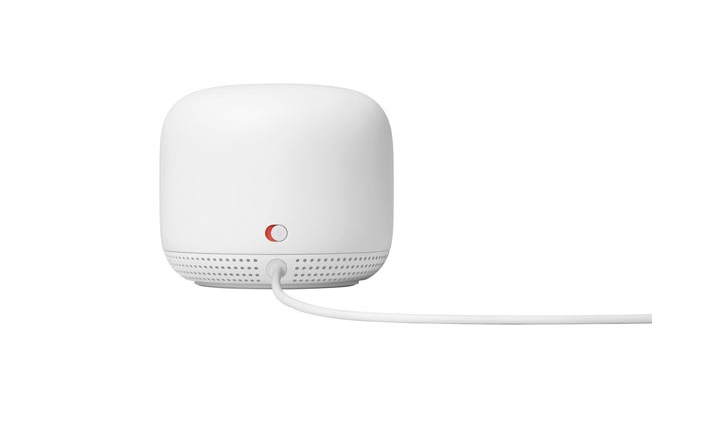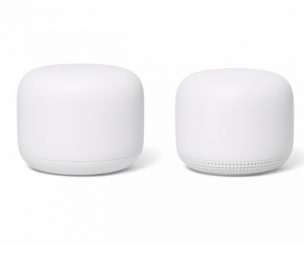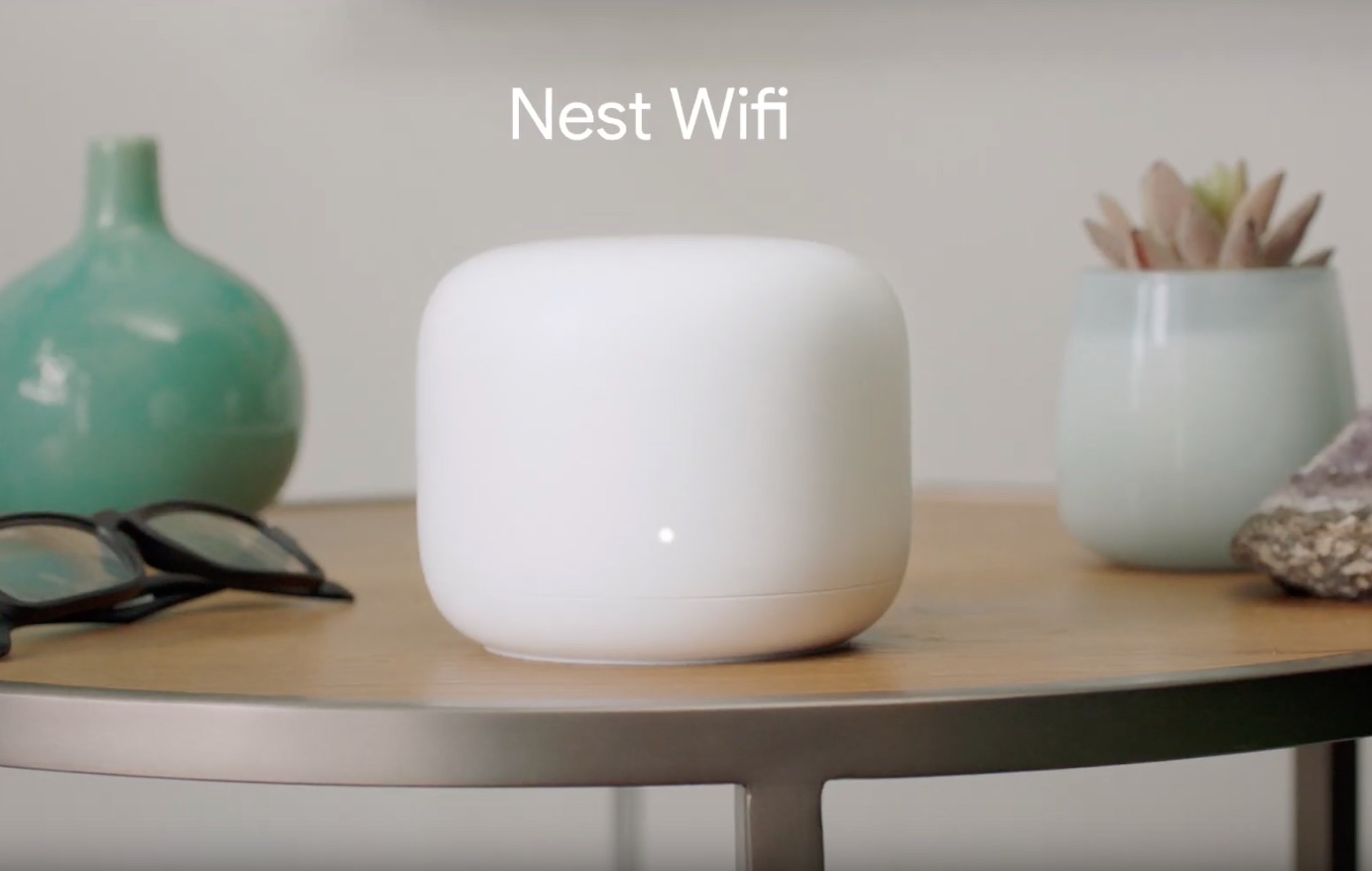It was nearly three years ago that Google announced its new Google Wifi router system. The new system caused a little confusion over the use of “Wifi” versus “Wi-Fi” terminology, but the stylish Google Wifi helped to popularize whole home mesh routers. On Tuesday morning, the company held a big “Made by Google” event in New York, and one of the new products announced was the Google Nest Wifi, the next generation of the company’s mesh router system. Expect to see it soon at Best Buy, but in the meantime, here’s everything you need to know.
Nest?
Nest is best known for its smart thermostats, smoke detectors and connected security cameras. So in case you’re wondering how “Nest” made it into the name, this is part of an ongoing effort on Google’s part to re-brand its smart home products and fully fold Nest (which it bought in 2014) into the company instead of having it as a standalone division. So former Google Home products will now be carrying the Nest name.
Now that we have naming out of the way, on to the details about the Google Nest Wifi!
Combining Mesh Wi-Fi With Smart Speakers
Smart speakers are extremely popular—and they depend on Wi-Fi—so we’ve already seen cases where a manufacturer turns their router into an all-in-one that incorporates a smart speaker. That can be pretty cool, but I think Google just made this concept much more useful with the new Google Nest Wifi.
This is a multi-part mesh Wi-Fi system, with a main router and multiple Wi-Fi access “Nodes.” The main router is Snow (white), with a single discrete status light. It’s a stylish and compact cylinder (just over 9 cm tall, 11 cm in diameter and weighing 380 g), equipped with 1GB of RAM and 4GB of Flash RAM. It has dual Gigabit Ethernet ports for hard wiring peripherals like video streamers or game consoles. Instead of a standalone app, everything is controlled through the Google Home app.

Extending the mesh system are Nodes, which are slightly smaller than the main router. They lack Ethernet ports, but add a speaker and microphone array.
 That’s right, the Nest Wifi Add-on Nodes will do double duty as Nest Mini smart speakers, with Google Assistant. This makes a lot more sense than incorporating the smart speaker into the main router, because these Nodes will be scattered through a home, offering Google Assistant access over a wider area. Someone who invests in a Google Nest Wifi whole home mesh Wi-Fi system will enjoy smart speaker functionality without having to buy standalone Nest Home smart speakers. Don’t worry about Google Assistant always listening in: The Nest WiFi Nodes project a ring of white light at their base when the microphones are active, but you can turn the mics off and see an orange light instead.
That’s right, the Nest Wifi Add-on Nodes will do double duty as Nest Mini smart speakers, with Google Assistant. This makes a lot more sense than incorporating the smart speaker into the main router, because these Nodes will be scattered through a home, offering Google Assistant access over a wider area. Someone who invests in a Google Nest Wifi whole home mesh Wi-Fi system will enjoy smart speaker functionality without having to buy standalone Nest Home smart speakers. Don’t worry about Google Assistant always listening in: The Nest WiFi Nodes project a ring of white light at their base when the microphones are active, but you can turn the mics off and see an orange light instead.
The new Wi-Fi 6 standard doesn’t make it to the Nest Wifi, which instead sticks with 802.11ac. The main router is equipped with AC2200 MU-MIMO Wi-Fi, with 4×4 (5GHz) and 2×2 (2.4GHz) antenna configurations. The Nodes are equipped with AC1200 MU-MIMO Wi-Fi. Google says the Nest Wifi is twice as fast and provides 20% better coverage than the original Google Wifi (one router + one Point offers 3,800 square feet of coverage). It also offers Bluetooth connectivity.
Google Nest WiFi Compatibility with existing systems
The new Google Nest Wifi is designed with compatibility in mind. You can use Nest WiFi Nodes as part of a multi-room audio system, grouping it with other Google Home and Nest smart speakers. According to Google, if you have an existing Google Wifi system, you can add Nest Wifi to that for increased coverage.
Google also noted that the Nest Wifi is intended to be the foundation of a smart home system, with local home connectivity, Google Assistant support and coming Thread capabilities (for secure connectivity with smart door locks, cameras, motion sensors and similar devices).
It’s also green …
I have to admit, I have never purchased a Wi-Fi router based on environmental factors. However, that’s of increasing importance to many consumers. If you’re looking for green cred, the Google Nest Wifi 2 has it. Google has been carbon neutral since 2017 and the company announced today it is investing $150 million in renewable energy. The Google Nest Wifi router’s enclosure is made from 45% post-consumer recycled plastic, while the add-on point cases incorporate 40% recycled plastic.
The advantages of whole home mesh routers
There’s a reason why mesh routers are so popular. Multiple reasons, as a matter of fact. They offer whole home coverage with no Wi-Fi dead spots. Individual units are smaller and less conspicuous than a standard router, making them easier to integrate into home decor. They actively manage your Wi-Fi network in the background to optimize performance. They are easy to set up. And many offer automatic security updates to keep your wireless traffic safe (Google said today that its original Google Wifi has received 15 automatic updates since launch). I made the move to mesh Wi-Fi last year and it was a great decision.
Google just added to those advantages by adding smart speaker capability to the mix.
 When can I get my hands on Google’s new Nest Wifi?
When can I get my hands on Google’s new Nest Wifi?
If you’re anxious to dramatically improve your home’s Wi-Fi, you can preorder Google Nest Wifi at Best Buy right now. It will be available in Canada on November 4th. You can purchase Nest Wifi and Nest Wifi nodes separately or in packages (there is even a package with one system and two nodes).
Stay tuned to the blog for more great information about the Google Nest Wifi and other top-selling whole home mesh routers offered by Best Buy.





Sounds like a killer setup — you are definitely all-in on Google…
I would love to try this out. I’m slowing turning my home into a smart home with Google everything. I have nest thermostat, 3 nest protects, 3 Google homes, Google pixel 3 XL and a couple light switches that are controlled by Google.
Comments are closed.